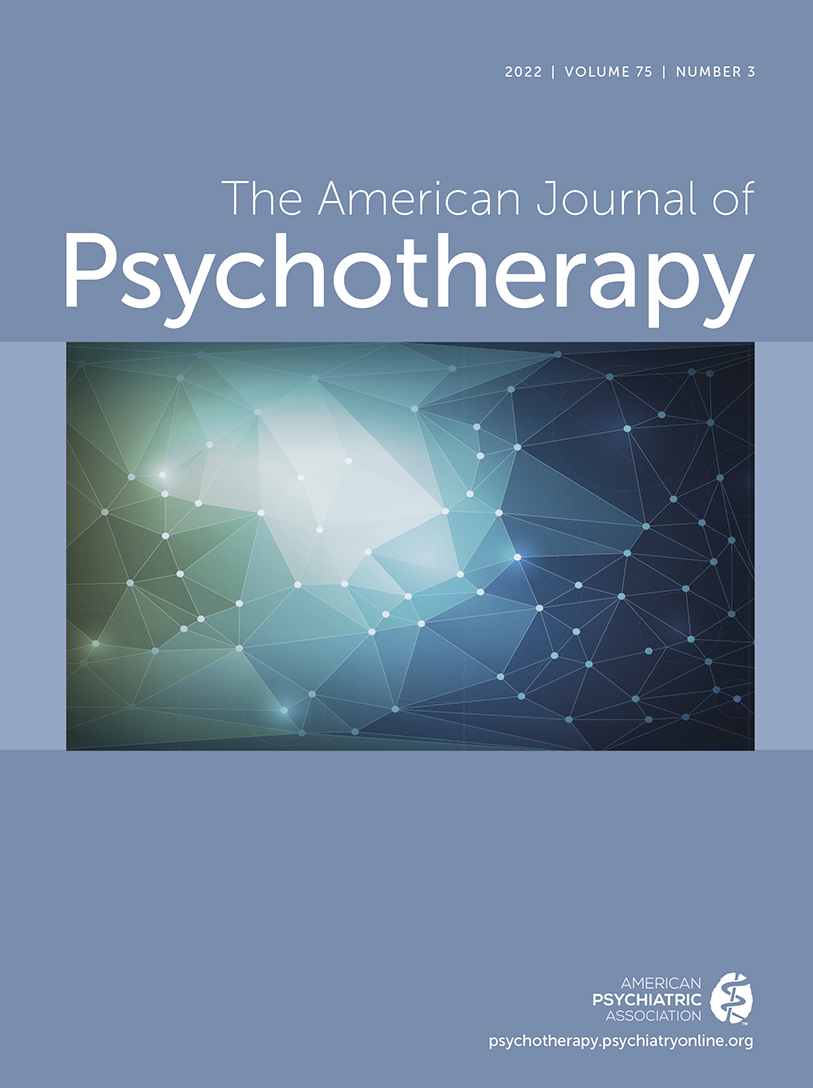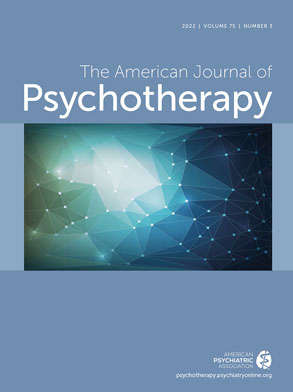Many university students exhibit nonclinical depression (
1). University students’ susceptibility to depression may be related to the psychological characteristics of emerging adulthood (
2). However, a relationship between depression and neurodevelopmental disorders has also been identified (
3,
4), and the number of students with attention-deficit hyperactivity disorder (ADHD) has been increasing (
5). Students with ADHD symptoms, regardless of whether they have been diagnosed, are prone to psychological problems such as depression, combined with school-related and interpersonal difficulties caused by a lack of social skills and hostile behavior (
6,
7). The settings where these students first ask for help are generally not medical institutions or a clinical psychologist’s office but places attached to educational institutions, such as student counseling centers.
Interpersonal counseling (IPC) is structured as a briefer version of interpersonal psychotherapy and can be targeted toward individuals who are experiencing distress or depression that does not meet diagnostic criteria (Weissman and Verdeli, 2013, unpublished manual). IPC was originally designed to treat depression in primary care settings (
8) or among patients with general medical illnesses (
9), but it has also shown effectiveness in educational settings (
10,
11). IPC is time limited, and a three-session IPC treatment for people with depressive symptoms is offered. IPC can even be provided by trained health personnel or counselors who are not clinical psychology specialists (Weissman and Verdeli, 2013). Therefore, strategic use of IPC may be effective for treating depression of undergraduate students who have interpersonal problems and ADHD symptoms. Furthermore, because IPC is a short-term and simple counseling method, it is likely that it can be easily used at counseling centers in educational institutions, such as universities. However, IPC studies that have considered ADHD symptoms have not been reported.
We recently performed a quasi-randomized controlled trial with two groups of students—one group receiving IPC and the other group receiving counseling with listening—to examine whether IPC was effective for depression up to 12 weeks postintervention among undergraduate students (IPC-U Study) (Hirokawa-Ueda, 2021, unpublished article). Data on the severity of ADHD symptoms for each participant were collected in the IPC-U Study, but no analyses were performed that considered ADHD symptoms. Therefore, we planned to perform a secondary analysis of the effect of IPC on students with ADHD symptoms as an exploratory study. Accordingly, the primary purpose of the secondary analysis, presented here, was to examine the efficacy of IPC for depression among university students with ADHD symptoms. The secondary purpose was to identify any differences in efficacy between IPC and counseling with listening for students with ADHD symptoms.
Methods
This secondary outcome analysis study of the IPC-U Study was performed from May 2016 to December 2020 (Hirokawa-Ueda, 2021, unpublished article). The IPC-U Study complied with the Declaration of Helsinki and was approved by the Kwansei Gakuin University Regulations for Research With Human Participants (#2016-15). Fifty-four participants were recruited from the researchers’ affiliated university. The inclusion criteria were as follows: university students ages 18 to 39 at the time of participation; complaints of stress and depressive symptoms, regardless of score on the Self-Rating Depression Scale (SDS) (
12); able to understand the study’s basic concept and provide written consent to participate; and physically and mentally able to receive counseling. The study’s procedures were explained orally and in writing during a university class. Students were assured that participation was voluntary, with no relationship between participation and class grades. After written consent was obtained, participants were assigned, alternately, in order of registration, to either IPC (N=26) or the control group (N=28). Participants were blinded to their assigned counseling method. Depression was assessed by using the SDS at baseline, postintervention, and at 4, 8, and 12 weeks postintervention. The reliability and validity of the SDS have been established (
13). For all questions, respondents selected the answer on a 4-point scale closest to their feelings at the time of the test. Total scores on the SDS range from 20 to 80. Higher scores indicate more severe depression.
IPC was performed in accordance with the IPC manual (Weissman and Verdeli, 2013), with no adaptations for students with ADHD symptoms. IPC sessions were held once a week, for approximately 50 minutes each, for three sessions (Weissman and Verdeli, 2013). The first session included a discussion of issues, such as the client’s problems, and key problem areas (grief, disputes, transitions, loneliness and/or isolation) were determined. In the second session, specific strategies to address the client’s problems were discussed and role-played. In the third session, the strategies were reviewed to help clients understand how these techniques could be used in the future. Counseling with listening was conducted with the control group. As with IPC, three weekly sessions were held for 50 minutes each. In all three sessions, participants were allowed to speak freely about their distress, and the therapists listened empathically. No specific strategies for addressing clients’ problems were discussed. Eight graduate students majoring in clinical psychology provided the counseling. The graduate students participated in at least 1 day of training held by the Interpersonal Therapy Research Committee in Japan. Group supervision for each session was led by a qualified psychiatrist. Written records of counseling were used in the supervision, but fidelity measures were not used.
This secondary analysis targeted those who scored at the cutoff score or above for part A of the Adult ADHD Self-Report Scale (ASRS) (
14) among those who completed the IPC-U Study. The ASRS was used to assess ADHD symptoms before the IPC-U Study intervention. The ASRS is composed of parts A and B and includes 18 questions developed in accordance with
DSM-IV diagnostic criteria. Assessment is based on symptom frequency graded on a 5-point scale (never, rarely, sometimes, often, and very often). The primary outcome of this secondary analysis was a reduction in total SDS scores for the IPC and control groups, from baseline to immediately postintervention, and at 4, 8, and 12 weeks postintervention. The secondary outcome was the difference in the amount of change in total SDS scores between the IPC and control groups. Dunnett’s test was used for statistical analysis of the differences in total SDS scores at each measurement period from baseline. Unpaired t tests were used to compare the amount of change in total SDS scores between the IPC and control groups. The significance level was p<0.05. Cohen’s d was used to determine effect size. SPSS for Windows, version 25.0, was used for statistical processing.
Results
Twelve participants scored at or above the cutoff point for part A of the ASRS, indicating they had symptoms of ADHD. All had several interpersonal problems, for example, with their mothers, friends, significant others, or supervisors. Participants were assigned to the IPC group (N=5; one man, four women) or to the control group (N=7; one man, six women). Mean±SD age was 19.40±1.14 and 20.29±1.25 for the IPC and control groups, respectively. Total SDS scores were 45.60±5.64 for the IPC group and 47.14±4.34 for the control group at baseline. There were no significant differences in SDS scores between the two groups. In the IPC group, the problem area was defined as “disputes” for three participants and as “transitions” for two participants. All participants received their assigned three sessions, none requested additional sessions, and all participated in the study through the 12-week follow-up. No adverse events were observed in either group.
Table 1 shows the change in total SDS scores at each measurement point from baseline. In the IPC group, no significant reduction in total SDS score was observed at any measurement point. However, a large effect size was shown after 4 and 12 weeks (d=0.96 and 1.11, respectively). In the control group, neither a significant reduction in total SDS score nor a large effect size was observed immediately postintervention or after 4, 8, and 12 weeks. A significant difference in SDS score reduction between the two groups was observed at 4 weeks postintervention (t=2.30, df=10, p=0.04). At 12 weeks, there was no significant difference, but a large effect size was observed (d=0.74).
Discussion
This secondary outcome analysis was exploratory. However, to the best of our knowledge, it was the first in Japan, or elsewhere, to examine the efficacy of IPC for depression among university students with ADHD symptoms. The participants in this analysis showed relatively high rates of depression compared with undergraduate students in the general population (
1,
11) and had interpersonal problems that were classified as disputes or transitions. There were no cases of grief or loneliness and/or isolation suggestive of troubles with interpersonal relationships in daily life. This finding was in line with previous studies (
6) that have shown that undergraduate students with ADHD symptoms tend to have depression combined with daily interpersonal difficulties caused by the ADHD symptoms.
This secondary outcome analysis indicated that, among university students with ADHD symptoms, IPC may show efficacy for depression 4 or 12 weeks later, but not immediately after counseling. Prior studies (
9,
10) have suggested that IPC has long-term effects, and it is conceivable that, for students with ADHD symptoms, the ability to apply the strategies learned in IPC to various problems may lead to long-term efficacy. However, this result differs from those of prior studies of general university students (
11), which have shown the effectiveness of IPC immediately after counseling. This difference could be explained by the fact that students with ADHD symptoms could not solve several of their interpersonal problems immediately after counseling. It may take time for students with ADHD symptoms to solve their problems with the strategies learned in IPC and to improve their depression.
This study had several limitations. First, this was a secondary outcome analysis that included only 12 participants, a sample that was statistically too small for adequate detection of power. However, considering that this was an exploratory study, we believe that the results provide important information for future research. Second, the SDS and ASRS were self-administered questionnaires. It will be necessary for specialists to conduct objective assessments of depression and ADHD symptoms, in addition to self-report measures. Third, we chose to study three sessions of IPC, because of the model’s high feasibility in the real world. However, different models of IPC, such as those including six sessions, may be better suited for students with ADHD. Further studies will be necessary to validate the efficacy of IPC for depression among undergraduate students with ADHD symptoms.
Conclusions
The sample size in this study was limited. However, the effect size demonstrated the possibility that IPC could affect depression among university students with ADHD symptoms. Considering that implementing IPC is highly feasible in university settings, we believe it is important to provide evidence of its efficacy. In the future, it will be necessary to validate the present results by increasing the sample size in randomized controlled trials.
Acknowledgments
The authors thank the staff at Editage for English language editing.

